18. The White Ribbon (2009)
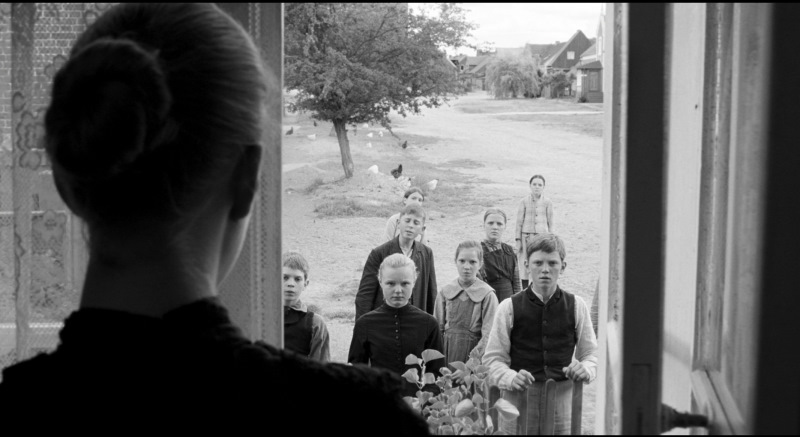
In a Protestant village in Germany, between 1913-14, a powerful puritanical pastor inflicts guilt upon the consciences of the children by forcing them to wear white ribbons. When his son has confessed to wrongful touching himself, his hands are tied to the bed frame every night. The doctor is kind to the children, but humiliates a local midwife.
At some point, a variety of unexplained incidents occur. The doctor falls from his horse that is was tripped with wire. The farmer’s wife dies at the sawmill when the floorboards collapse and her husband commits suicide. The baron’s son disappears, but turns up the next day, tied down in the sawmill and badly beaten.
The baron’s wife tells her husband that she loves another man. The handicapped son of the midwife is attacked and almost blinded. A schoolteacher has his suspicions that the pastor is behind these waves of violence and deadly mishaps.
Written and directed by Michael Haneke, “The White Ribbon” was a project in development for more than ten years. The feature depicts small German village’s society just before the first World War and the roots of evil with religion and politics.
Over 7,000 children were auditioned over a six month casting period, while Haneke chose the adults that he had worked with on previous films. It was shot over the course of five days, initially on color stock, then transferred to black and white to reflect the era that the story is set in. It received rave reviews and would go on to win several awards.
19. The Whisperer in Darkness (2011)
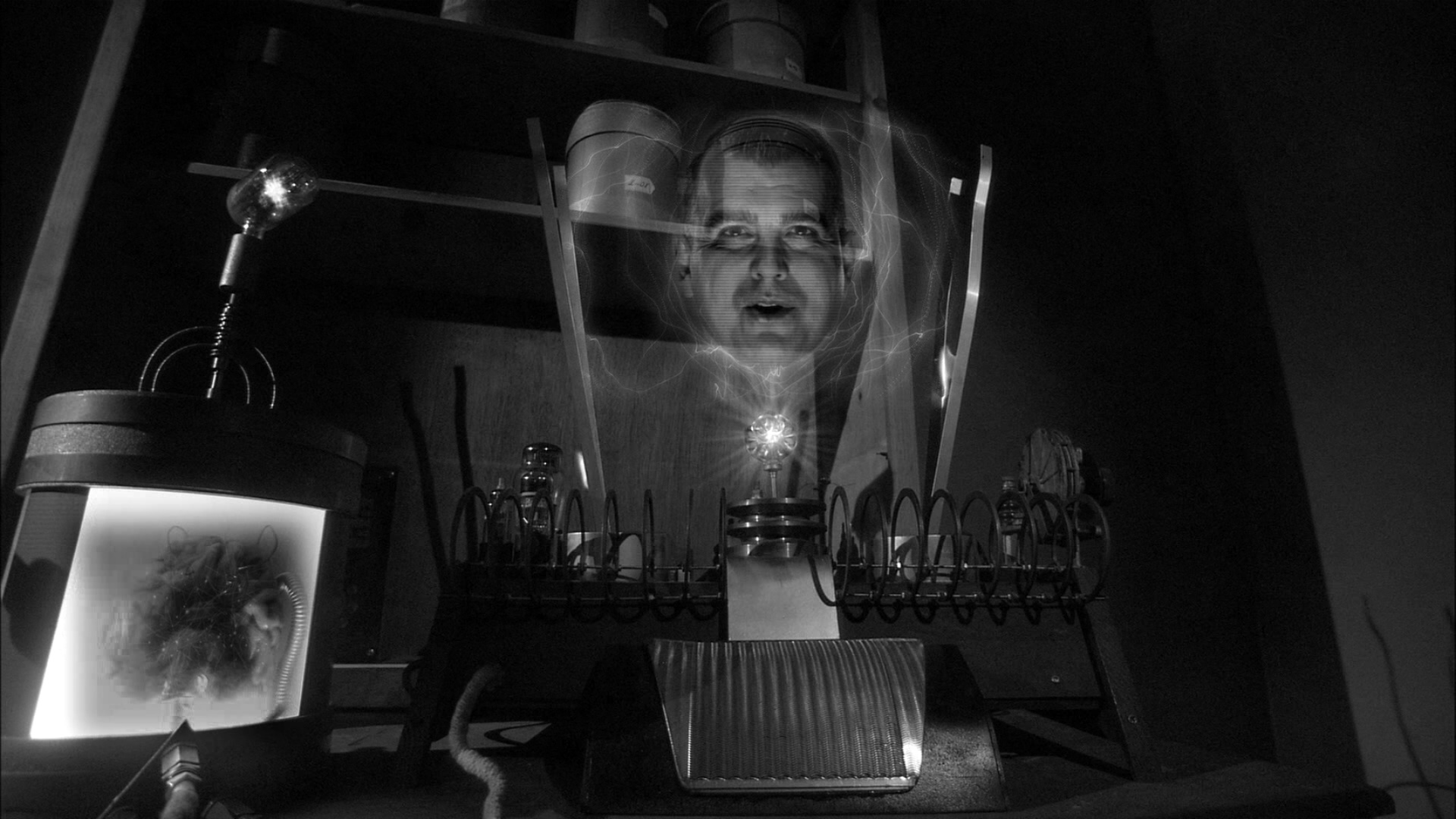
A rural town in Vermont experiences a series of floods and the bodies of grotesque creatures are floating in multiple rivers. A literature instructor, Albert N. Wilmarth (Matt Foyer) blames old legends about monsters in the hills who abduct townsfolk who wander to close. He receives a letter from Henry Wentworth Akeley (Joe Sofranko) who resides in an isolated farmhouse, insisting that Wilmarth must cease focusing on such claims and has convincing proof of the creatures’ existence.
As they exchange letters, Akeley includes a document that has a record extraterrestrials chanting with humans who worship beings such as Cthulhu and Nyarlathotep. When law enforcement agents intercept their letters and descend upon the farmhouse and kill many of the owner’s guard dogs, the resident has a change in heart and says that the aliens are peaceful and urges Wilmarth to pay him a visit for further disclosure.
Based on the 1931 short story by H.P. Lovecraft, “The Whisperer in Darkness” was directed by Sean Branney, whom also wrote the screenplay with Andrew Leman. The first two acts remain faithful to the original story, but a third act was developed in effort to make the adaptation more complete.
The black and white film was shot with the use of Mythoscope, which blends vintage and modern techniques to capture the look of many 1930s-era monster movies. Distributed by H.P. Lovecraft Historical Society, the feature received positive reviews and a couple award nominations.
20. Keyhole (2012)
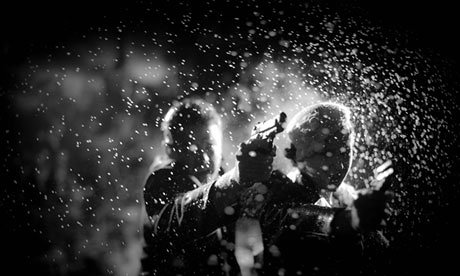
In haunted house filled with memories, gangster and deadbeat dad, Ulysses Pick (Jason Patric) and his cronies take refuge, while the police have them surrounded. In tow is a limp body of Denny (Brooke Palsson) who slowly becomes conscious upon entering and reveals that she can read Pick’s thoughts. Big Ed, who is second in command, releases the bodies of their dead gang members, who appear to be alive upon exiting.
Pick is wandering through the house, searching for his wife, Hyacinth (Isabella Rosselini), who is hiding in a bedroom with the body of her father, Calypso/Camille (Louis Negin) in chains and is one of the ghosts within the house. When the outlaw regroup, they are confused about their plan and wonder why the police haven’t raided the place, but Ulysses claims they are safe while the storm is still in force.
Directed by Guy Maddin with a script co-written with George Toles, “Keyhole” is a comedic, surrealistic gangster crime story merged with a haunted house tale, that draws inspiration from Homer’s “Odyssey”. The cast includes Kevin McDonald (from the Kids in The Hall), Udo Kier, Daniel Enright, Suzanne Pringle and several more.
Filmed in Winnipeg, Canada, Maddin used digital video versus his usual method of 16mm or Super-8mm in effort to save on production costs. The soundtrack music was composed by Jason Staczek and crucial to give the feature as sense of timelessness.
21. A Coffee in Berlin (2012)
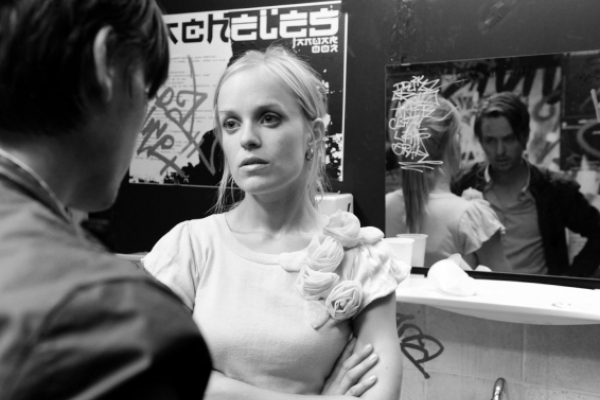
In Berlin, Niko (Tom Schilling) leaves his girlfriend, Elli (Katharine Schuttler), and is vague about where he’s going, but is already set up in a new apartment. He arrives late to his court ordered appointment with a psychologist for a DUI and is questioned about dropping out of law school, his relationship with his parents along with his sexual preference.
Niko later roams the streets and tries to buy a coffee, but has given his money to a homeless person and the ATM eats his card. He meets up with a friend for lunch and encounters a former classmate who once had a crush on him. When Niko meets up with his father, he is told that he has been cut off financially, which causes him to wander further in a drunken stupor and look for drugs.
“A Coffee in Berlin” is the debut of writer and director Jan-Ole Gerster. The black and white tragicomedy is an ironic portrayal of a young, unstable man’s journey to acquire relatively simple things.
However, there are always obstacles and frustrations involved with trying to one’s place, when constantly running from problems or refusing to accept responsibility. Originally titled “Oh Boy” in its home country, the feature went on to win six awards at the 2013 German Film Ceremony.
22. Blancanieves (2012)
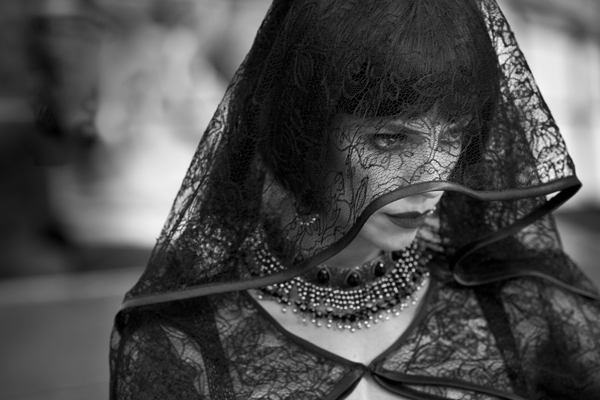
In Seville, Spain during the 1920s, seven bullfighting dwarves rescue a young female amnesiac, Carmen (Macarena Garcia). When they realize that she has natural abilities as a matador, they name her Blancanieves and use her skills for their own capitalistic intentions.
However, the dwarves are unaware of her history; her deceased father, Antonio, was a well-known bullfighter and Carmen’s mother died while giving birth to her. Antonio quickly married the evil nurse, Encarna (Maribel Verdu) who treated his daughter cruelly and lived carefree off of his wealth.
Written and directed by Pablo Berger, “Blancanieves” is a Spanish interpretation of the Brothers Grimm fairy tale “Snow White”. Shot in black and white with no dialogue and music by Alfonso de Vilallonga, the 2012 feature is a “love letter” to the European silent films. Upon receiving rave reviews, it would rack up numerous nominations and win multiple awards at various international film festivals.
23. Ida (2013)
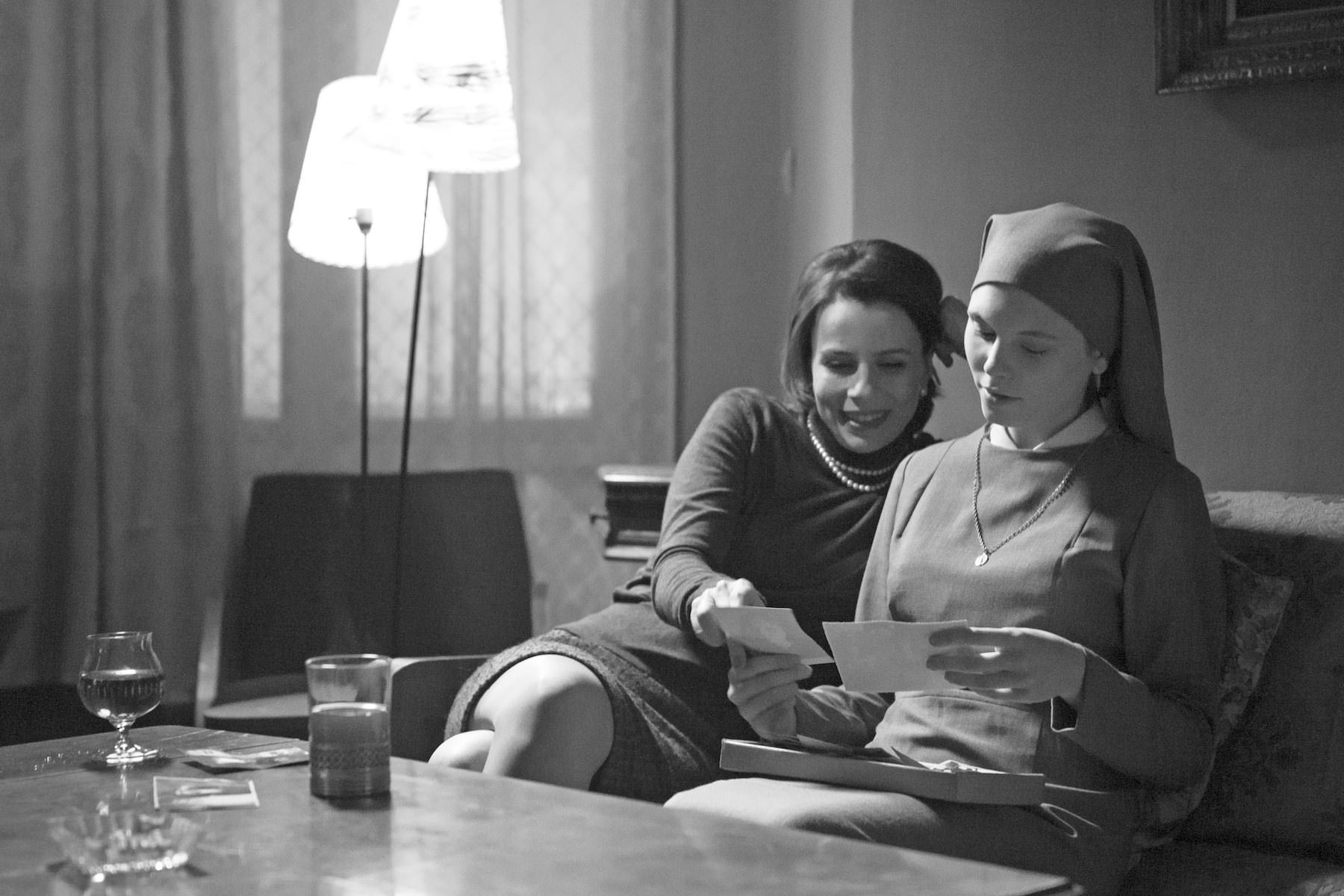
Poland, 1962, Anna (Agata Trzebuchowska) is about to take her vows as novice Catholic nun, but is told visit her aunt Wanda (Agata Kulesza). Her only surviving relative is a chain-smoker, hard drinking and promiscuous judge who tells the young niece that her real name is Ida Lebenstein and was orphaned when her Jewish parents were murdered during World War II.
Wanda was a Communist resistance fighter that became a state prosecutor that tried, convicted and executed Nazis after the war. She convinces Anna/Ida that she should experience some sins and pleasures before joining the convent. The two of them embark on a road trip of indulgence and exploration.
Directed by Pawel Pawlikowski with a script co-written with Rebecca Lenkkiewicz, “Ida” is a black and white Polish drama about self-discovery among the beautiful and painful memories of family histories. Much of the storyline was rooted in factual events and people, from his parents and grandmother to Helena Wolinska-Brus, the basis for Wanda.
After auditioning over four-hundred actresses for the role of Anna/Ida, Agata Trzebuchaowska was discovered by the director’s friend and had no previous experience or interest in an acting career. Despite mild controversy over the perspective of Christian and Jewish relations, the film received positive acclaim and would win multiple awards at international festivals, including the Best Foreign Language Film at the 2014 Academy Awards.
24. A Girl Walks Home Alone at Night (2014)
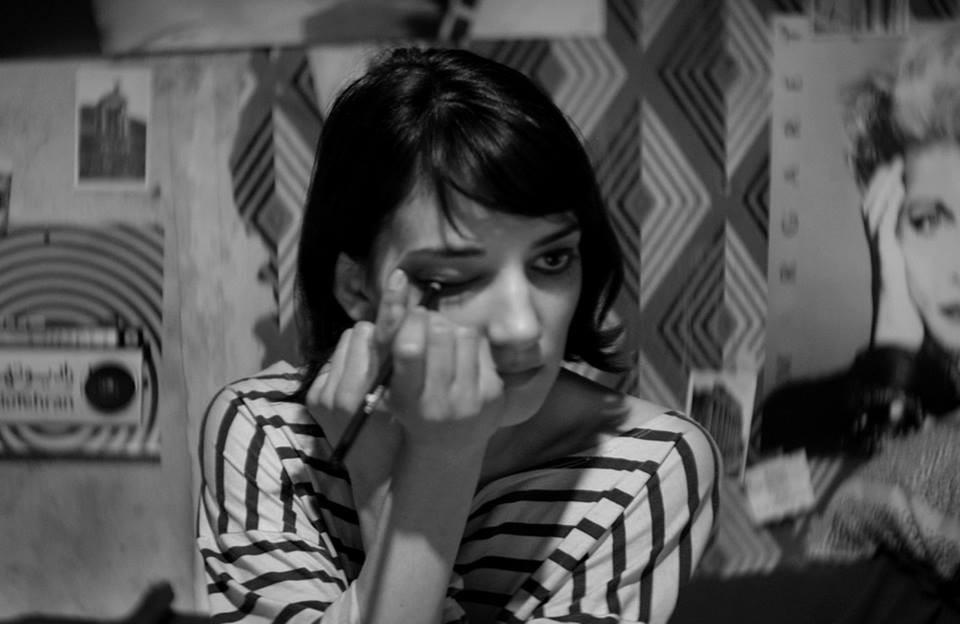
In an Iranian ghost town known as “Bad City”, Arash takes care of his heroin addicted father and they are harassed by a drug dealing pimp, Sadeed, who takes their car as collateral. The hardworking son resorts to stealing a pair of diamond earrings from his wealthy female boss, Shaydah, to cover his father’s debt. Sadeed encounters a Girl (Sheila Vand) wearing a chador, who sprouts fangs and lunges at his neck.
When Arash comes by to pay the dealer, he finds him dead, takes the car keys, a stash of drugs and money. He heads to a night club, takes a pill and makes an advance toward his boss, who rejects him. Left alone to wander the streets, he is approached by the Girl, who invites him up to her place to listen to music. However, while he is passed out, she resists the urge to feed on him.
“A Girl Walks Home Alone at Night” is the debut feature written and directed by Ana Lily Amirpour. The black and white film is described as “the first Iranian vampire spaghetti western” which depicts the life of a lonely bloodsucking girl dressed in black.
Although shot entirely in southern California, the story’s setting is in the middle east and the language is solely in Persian with English subtitles. The film received a positive response and is being adapted into a graphic comic book novel.
25. Aferim! (2015)
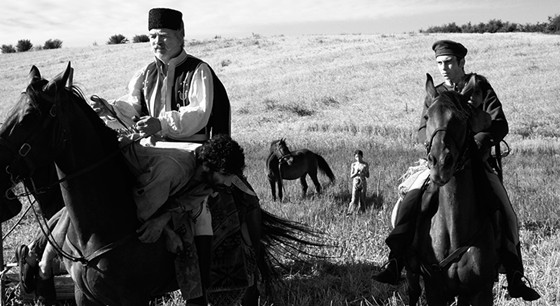
In Wallachia, Romania during the nineteenth century, a sheriff, Costandin (Teodor Corban) is hired by a boyar, Iordache (Alexandru Dabija) to capture Carfin (Toma Cuzin), a Gypsy slave.
Apparently, the young slave has been having an affair with the boyar’s wife, Sultana (Mihaela Sirbu). Costandin and his son set out on an adventure through the country land, forests and swamps to bring the fugitive slave and the runaway wife back to the village.
Directed by Radu Jude and a script co-written with Florin Lazarescu, “Aferim” brings to light the dark history of slavery’s five-hundred years in Romania. Shot with color film stock, then transferred to black and white to enhance a classic old Western esthetic and embrace the humanity of the harsh historic documentation from a fictional story.
The 2015 feature would win close to twenty awards at various international festivals for Best Director, Best Cinematography, Best Screenplay, Best Film and many more.
Author Bio: James Leon is a screenwriter/director currently residing in the Bay Area of California. His first feature length film, “Dropping Like Flies”, is gearing up for a release in September of 2015. He loves cats, coffee & collage art.